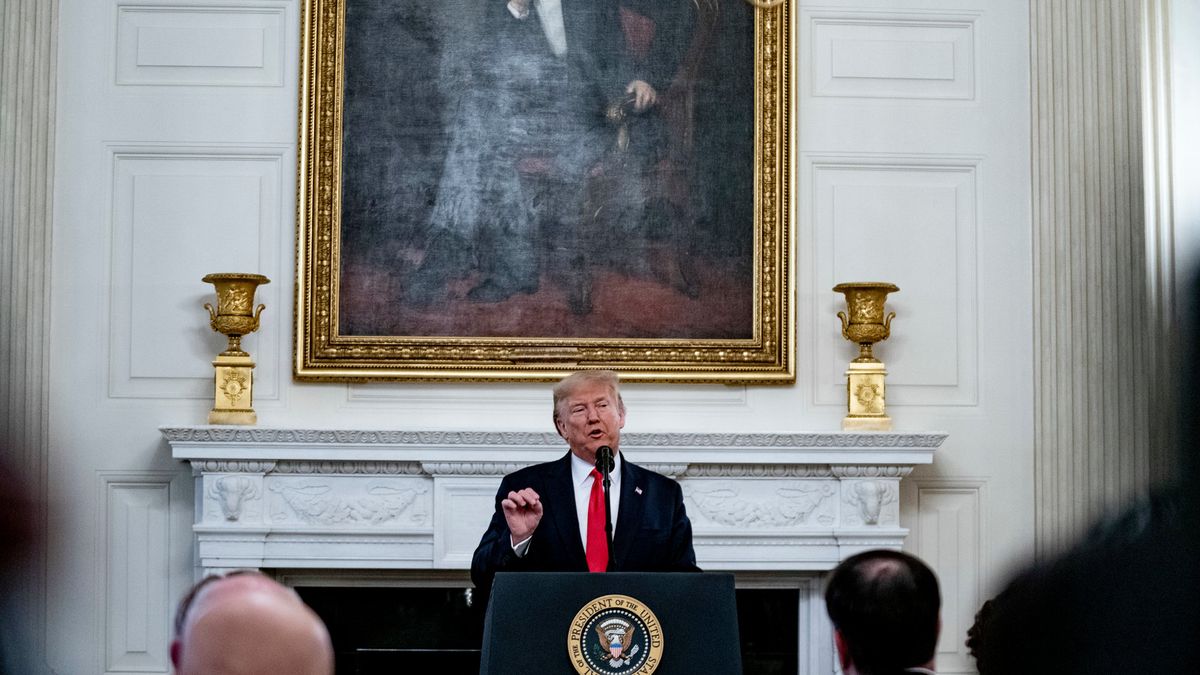Trump budget increases national debt, cuts funding for social programs and EPA

A few minutes every morning is all you need.
Stay up to date on the world's Headlines and Human Stories. It's fun, it's factual, it's fluff-free.
On Monday, February 10, 2020, US President Donald Trump’s administration published its proposed $4.8 trillion budget for the 2021 fiscal year. The budget, which has received criticism, makes cuts to many social programs as well as the Environmental Protection Agency (EPA).
The submission of the president’s budget is only the first step in an extended process for setting the country’s federal budget. By the time the budget is settled on by Congress and approved by the president, many of the suggested funding cuts or increases in the initial proposal may have been rejected.
What’s in Trump’s budget?
Briefly laid out in his State of the Union address, Trump’s budget proposal aims to pay for his agenda for the next fiscal year, which will run from October 1, 2020 to September 30, 2021. Titled “A Budget for America’s Future," the proposal, assembled by the Office of Management and Budget, discusses the “key priorities of [Trump’s] Administration" before laying out the specific budget policies.
Those priorities are “Better Trade Deals,” “Preserving Peace through Strength,” Overcoming the Opioid Crisis,” “Regulation Relief,” and “American Energy Independence.”
What then follows is an explanation of the goals for each department or agency of the federal government and their respective budgets for the coming year. For the Department of Defense and the Department of Homeland Security, the proposed budgets are increased over their enacted budgets from 2020.
The proposal includes a request for US$2 billion to construct more of the border wall. That is in addition to the US$5.7 billion Trump already received for the wall in December 2018 and the US$3.6 billion extracted from the Pentagon’s budget in 2019. Trump’s 2021 budget also requests US$182 million for an additional 750 border patrol agents.
Most other departments are facing cuts. That includes the Department of Agriculture, the Department of Education, the Department of Health and Human Services, and the Department of Housing and Urban Development. Other budget cuts are proposed for the EPA, the Corps of Engineers—Civil Works, and the Small Business Administration.
There would also be cuts to Medicare and Medicaid. However, Trump promised not to cut either of those social welfare programs during his 2016 presidential campaign.
Criticism of the proposed budget
Trump’s budget immediately received criticism for its proposed cuts. On the day the budget came out, Democratic Senator Chris Murphy tweeted, “Yesterday: 97 died of Coronavirus in China alone. Today: President Trump announced plans to cut funding for global health programs by 34%.”
As reported in The Hill, another critic was President Barack Obama’s EPA Administrator, Gina McCarthy, who said the cuts to the EPA were “putting our families and communities at risk.” Some money cut from the EPA’s budget would be taken from the program responsible for cleaning up toxic waste.
The budget process
As CNN explains, a president’s budget proposal represents a “statement of priorities” but it rarely represents a realistic look at what the next year’s budget will look like. That’s especially true with the opposition Democrats in control of the House of Representatives.
Trump’s submission begins a protracted process that will take months. Budget committees in both the House and the Senate will interview administration officials to help them craft their own budget proposals. After the committees finalize their proposals, they will be presented to the full House and Senate to be voted on and amended.
Once the Senate and House have passed their individual budgets, a conference consisting of members of both chambers will work out a consolidation of the two budgets until they agree on a budget resolution. That resolution must then be passed in both chambers.
The entire process involves negotiations that usually result in dropping many of the president’s proposals. This year, the Trump budget cuts foreign aid by 21%.
This follows a pattern from Trump’s previous budgets that have also requested cuts to foreign aid, but so far Congress has ignored those requests each year.
Ballooning debt and deficit
When Trump was campaigning for the presidency in 2016, he said he would eliminate the US’s national debt within eight years.
In 2019, the US debt reached US$22 trillion for the first time ever, and it has kept growing. It is currently more than US$23 trillion according to the US debt clock.
Trump’s new budget is said to produce a deficit over the next decade. That comes after 2019, when the US deficit reached US$1 trillion for the first time since the middle of Obama’s presidency.
A deficit is created when the government spends more money than it brings in over any given year. Successive years of deficits lead to greater national debt as the government has to borrow money to pay off the difference.
[article_ad]




Comments ()